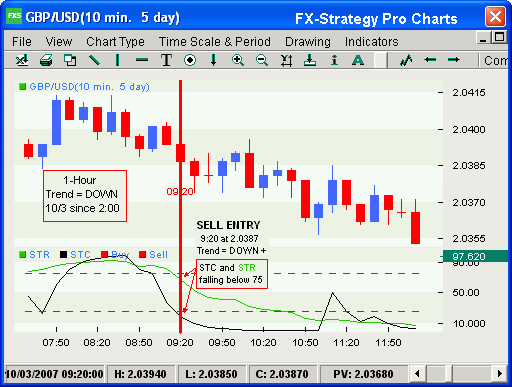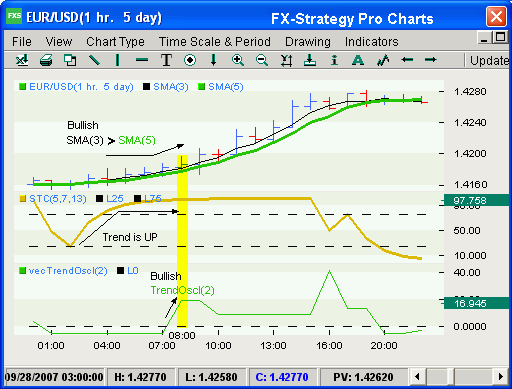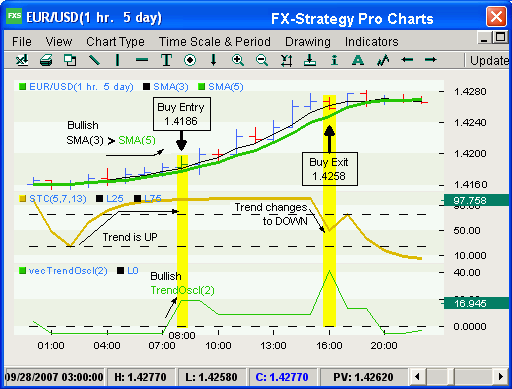Structure Your Trades.
Our strategies are composed of four elements: trend, trade entry, trade exit and risk control. Below are brief explanations of each. To see our technical trading tools applied within this framework, take a look at Strategy Examples.
Trend
Trend is the overall direction of prices: up, down or sideways. “Trading with the Trend” may sound simple, but applying this concept to live trading is not as easy as it looks.
How do our tools determine Trend? Pro Charts and Pro Commentary provide powerful trend indicators, signals and forecasts, including two expert indicators that provide automated price commentary and forecasts on every pricebar.
Trade Entry
Once you know Trend, the next tasks involve timing trade entry, when and at what price to get into the market. The highest probability trades are made in the direction of the trend. Selective range trading and counter-trend trades can be profitable.
How do our tools determine Trade Entry? FXS buy and sell signals are based on one or more unique indicators, such as FXS Adaptive Moving Average that adjusts quickly to market conditions or combines effectively to generate limit entry or breakout entry prices.
Trade Exit
Maximizing profit and cutting losses are both necessary. We focus on each separately because this is where traders often make mistakes. The tendency is to close out a profitable position too early and to allow small losses to turn into larger ones.
When you place a trade you won’t know for sure if it will be a winner; and if a winner, which type of order will capture the most profit. Rather than trying to anticipate the best exit for a trade, you need to use competing Trade Exit orders to maximize profits.
How do our tools determine Trade Exit? Pro Charts can be set for multiple, competing take-profit alerts that allow for different types of price moves. These include: Trailing Stops, Profit Targets, Protect Profit Orders and Time-based Exits.
Risk Control
Cutting your losses: To prosper from your winning trades you need to control the risk of the losing trades. To control the maximum amount of equity at risk every trade needs to have a risk control stop loss order. And you want to determine what size position to take in relation to your risk limits. Remember that when you set your sights on hi-probability trades, you are also working to avoid losing trades, which is an ongoing and essential risk control activity.
How do our tools Control Risk? The advanced trading indicators, signals and forecasts on Pro Charts and Pro Commentary help target profitable trades. Key support/resistance levels highlight potential locations for stop loss orders.
The Risk Controller takes you step-by-step through setting Risk Limits, Stop Loss Orders, and determining Position Size. Use our Strategy Worksheet before, during and after the trade as an entry checklist, to monitor exit alerts, control risk and afterwards, to review the trade.














